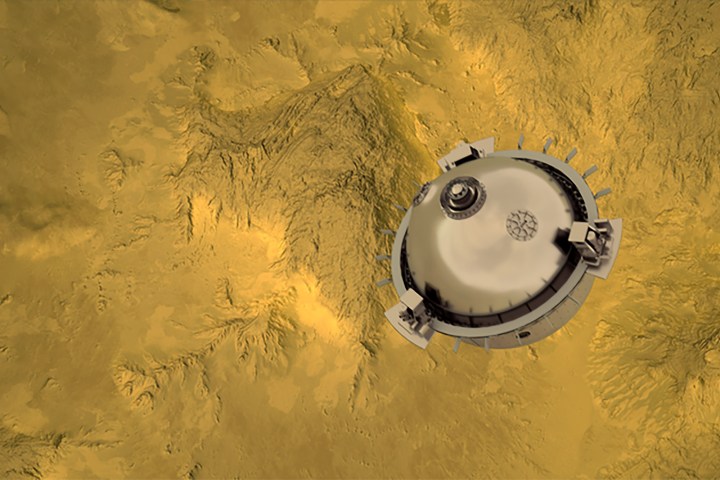Within the next decade, NASA’s DAVINCI mission plans to send a descent sphere whistling through the atmosphere of Venus, collecting not only samples of its atmosphere but also high-resolution images of the planet’s surface. But Venus is a deeply inhospitable place, with surface temperatures hotter than an oven and pressure so great it is like being 900 meters underwater. Now, NASA has shared more details about one of the DAVINCI mission’s instruments and how it will collect vital data in this most challenging of environments.
DAVINCI’s VASI instrument (Venus Atmospheric Structure Investigation) will be responsible for taking readings of the atmosphere as the descent sphere drops through the atmosphere on its 63-minute-long fall to the surface, including collecting data on temperature, pressure, wind speed and direction. This should help answer some long-open questions about the planet’s atmosphere, particularly its lower atmosphere, which remains a mystery in many ways.

“There are actually some big puzzles about the deep atmosphere of Venus,” said the science lead for the VASI instrument, Ralph Lorenz of the Johns Hopkins Applied Physics Laboratory, in a statement. “We don’t have all the pieces of that puzzle and DAVINCI will give us those pieces by measuring the composition at the same time as the pressure and temperature as we get near the surface.”
Researchers want to know how the surface interacts with the atmosphere, and whether the volcanoes observed across Venus interacted with the atmosphere in the past. We know there are many of these volcanoes on Venus, but we don’t know whether they are active today or not. Understanding the history of volcanism is particularly important to understand whether the planet could ever have been habitable.
“The long-term habitability of our planet, as we understand it, rests on the coupling of the interior and atmosphere,” said Lorenz. “The long-term abundance of carbon dioxide in our atmosphere, which we really rely on to have kept Earth’s surface warm enough to be habitable over geologic time, relies on volcanoes.”
It’s no easy task to design something that can withstand not only the high temperatures and pressures on Venus, but also the corrosive sulfuric acid found in its atmosphere. VASI will collect data using a temperature sensor which is encased in a metal tube like a straw to protect it from the atmosphere, and its atmospheric sensor uses a silicone membrane stretched over a vacuum to detect the distortions caused by the pressure. Other sensors in VASI include accelerometers and gyroscopes used for measuring the wind which will be kept safe inside the thick titanium descent sphere.
“Venus is hard. The conditions, especially low in the atmosphere, make it very challenging to engineer the instrumentation and the systems to support the instrumentation,” Lorenz said. “All that has to be either protected from the environment or somehow built to tolerate it.”



